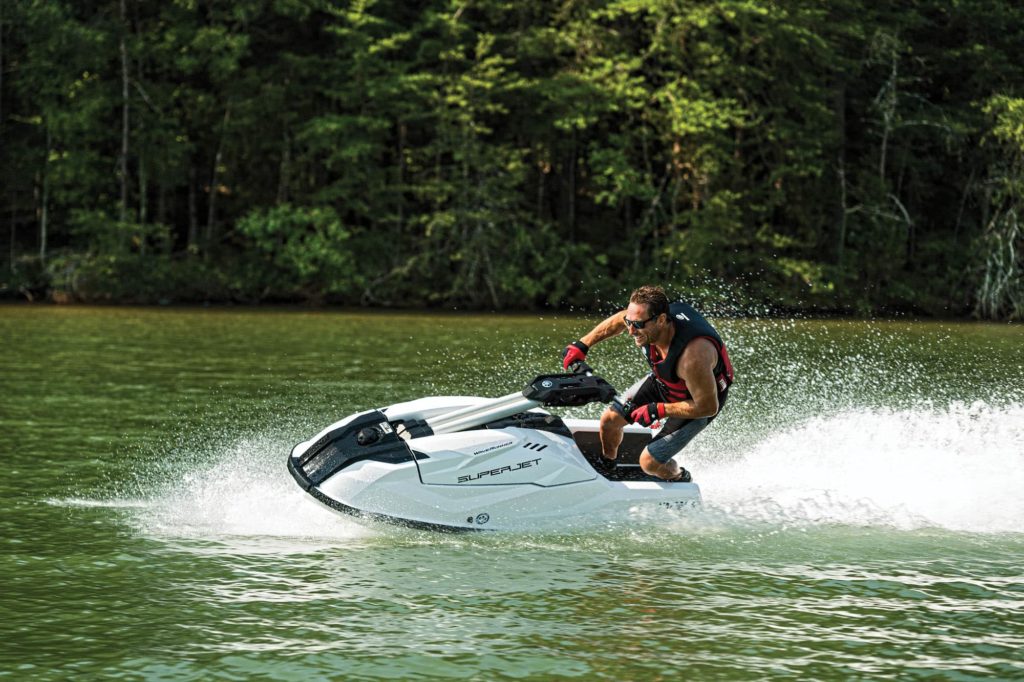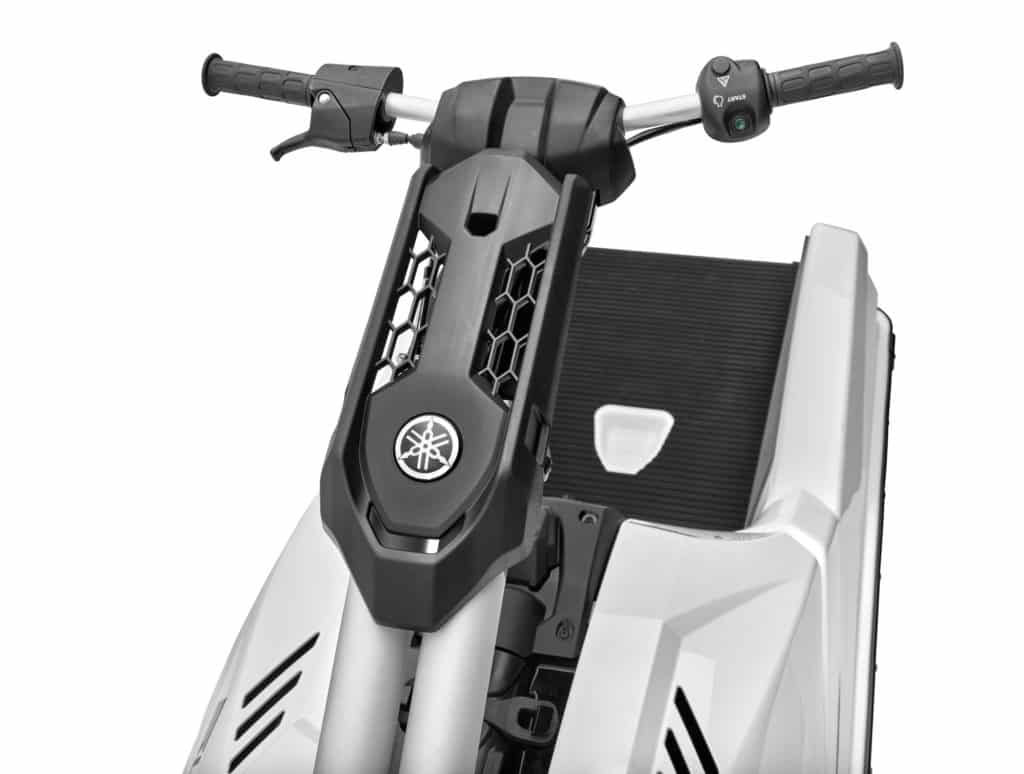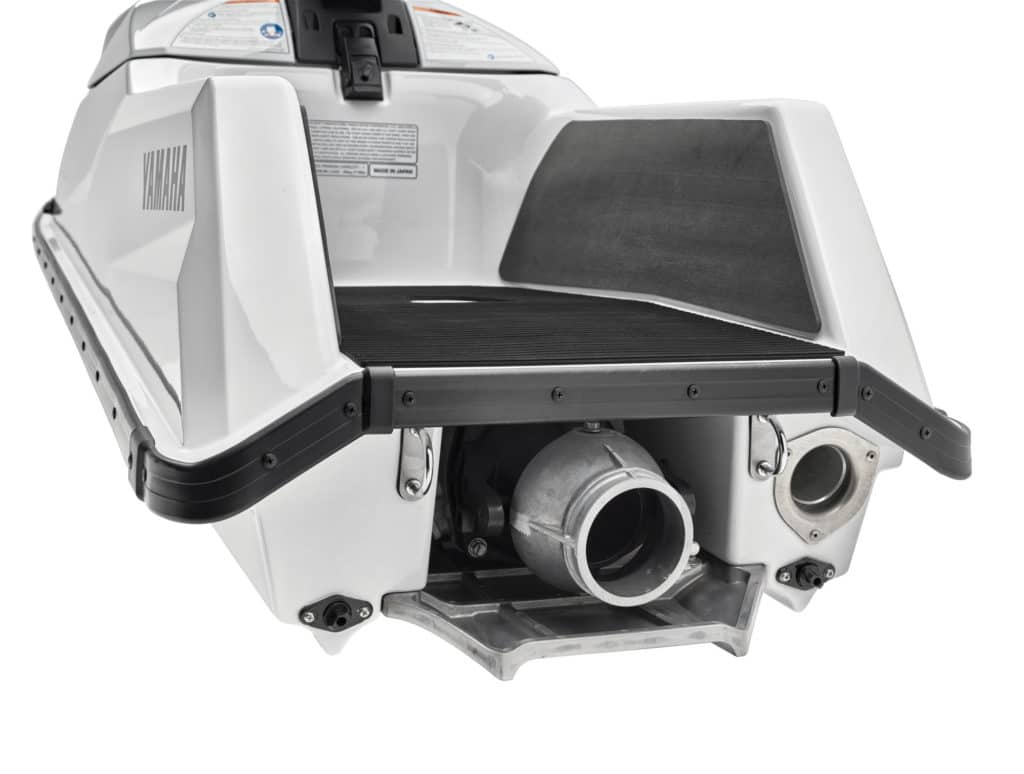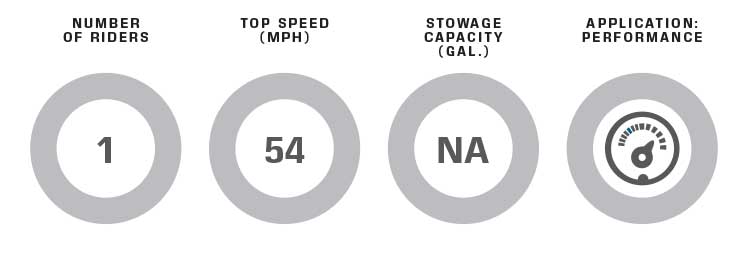The iconic Yamaha SuperJet still impresses. You may remember the original SuperJet. It was all torque and performance—and for the average rider, all falls. Thirty years later, Yamaha has introduced the all-new SuperJet, mercifully presenting it with more stability than ever before. And with these changes, the SuperJet is officially available to the recreational market without a race license.

Further flattening the learning curve, the new SuperJet incorporates L-Mode, which governs the engine’s performance to 85 percent. Together with the much more stable hull, the learning mode gives beginners a surprisingly stable platform to grow their skills. The most noticeable improvement was in corner stability, with even novice riders able to crank tight turns within an hour, at both slow and medium speeds. This is something you would previously have had to spend at least a summer and several hundred falls mastering on the original SuperJet.
None of this is to say the new SuperJet isn’t responsive. With a three-position adjustable hand pole, racing-style handlebars, and a lightweight and compact design that’s only slightly larger than the legendary two-stroke, the 2021 SuperJet is built for thrills. We topped out at around 47 mph in a choppy bay before throwing in the towel. With a top speed of 54, the SuperJet has more than enough high-end performance for anyone we know.

Taking advantage of proven Yamaha technology at use in plenty of other equipment, the SuperJet taps the three-cylinder, four-stroke TR-1 engine for a torquey, responsive ride that (again, mercifully) only requires regular unleaded fuel. Feeding the TR-1 is a 5-gallon gas tank that allows for plenty of fun on the water without frequent fill-ups. And while it may sound like a given to riders not familiar with the stand-up world, Yamaha incorporated a gas gauge with a high-vis low-fuel warning light to eliminate the guesswork and inevitable tow-ins associated with the old-school stand-ups.
Overall, the new SuperJet provides everything you hope for in a new or rediscovered sport: a fun challenge without the frustration. Add to the value proposition a reasonable price tag, well-thought-out design and execution, and a minimalist graphics package that pops on the water, and you’ve got a lot of reasons to like this new PWC.

High Points
- Stable enough to succeed on day one without sacrificing on torque throughout the rpm range. It offers the best of both worlds.
- L-Mode limits throttle, great for those learning or returning to stand-up riding.
- Gas gauge prevents tow-ins.

Specs
LOA: 7′11.7″
Beam: 2′5″
Dry Weight: 375 lb.
Seat/Weight Capacity: 1/176 lb.
Stowage Capacity: NA
Fuel Capacity: 5 gal.
Price: $9,499 (starting)
How We Tested
Engine: Four-stroke, 3-cylinder TR-1 Yamaha marine engine
Pump/Impeller: 3-blade stainless steel
Gear Ratio: 1.00:1
Fuel Load: 5 gal.
Crew Weight: 180 lb.
More Information
Yamaha Jet Boat Manufacturing – Kennesaw, Georgia; yamahaboats.com





